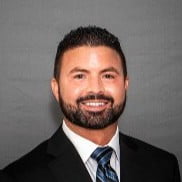

Watching someone you love struggle with addiction can be heartbreaking. But trying to force them into recovery often makes things worse. That’s where the Invitational Model Intervention comes in—a non-confrontational intervention approach that replaces pressure with partnership and control with compassion. It focuses on inviting the person into a healing process, not pushing them into it.
Addiction is dangerous and often deadly. According to the Centers for Disease Control and Prevention (CDC), more than 100,000 people died from drug overdoses in a single year in the U.S. That number doesn’t include the many more who suffer in silence or in denial. Traditional interventions can sometimes backfire, causing anger, shame, or complete withdrawal from loved ones.
As Fred Rogers (Mr. Rogers) once said:
“Anything that’s human is mentionable, and anything that is mentionable can be more manageable.”
The Invitational Model gives families and professionals a way to talk about addiction with honesty, care, and openness—so healing becomes more manageable for everyone.
What Is the Invitational Model Intervention?
The Invitational Model Intervention is a modern, evidence-informed method for addressing addiction in a way that is both respectful and effective. Developed by Dr. Ed Speare and Wayne Raiter, this model flips the script on traditional, surprise-style interventions. Instead of confronting the person in crisis, it invites them to participate in a series of collaborative meetings with family and professionals.
This approach removes the element of surprise and avoids emotional ambush. Everyone—both the person with the addiction and their loved ones—are encouraged to attend an educational, family-focused workshop or therapy session. No blame. No shame. Just facts, feelings, and options for recovery.
Why Use a Non-Confrontational Intervention Approach?
Not everyone responds well to confrontation. In fact, for many people struggling with addiction, being “called out” can make them defensive or even drive them deeper into denial or use.
A non-confrontational intervention approach like the Invitational Model:
- Respects the individual’s autonomy
- Creates a safe space for open dialogue
- Encourages voluntary participation
- Builds trust rather than resistance
- Includes the whole family in the healing process
This model is especially helpful for individuals who may be resistant to change or who have a history of trauma, mental illness, or negative experiences with authority.
How the Invitational Model Works
The structure of the Invitational Model Intervention can vary, but typically includes these core steps:
1. Family Preparation
A trained therapist or interventionist works with the family to help them understand addiction and the goals of the intervention. Everyone learns how to communicate without blame and how to set healthy boundaries.
2. Sending the Invitation
Instead of a surprise confrontation, the person struggling with addiction is invited to attend a pre-arranged meeting, workshop, or therapy session. This invitation is made with love, not pressure.
3. The Meeting
At the session, the focus is on education, understanding, and hope—not judgment. Family members and professionals may share how the addiction has affected them, but the main purpose is to offer support and options for recovery.
4. Ongoing Support
Whether or not the person accepts help right away, the family continues therapy, education, and boundary-setting. If the loved one joins, great! If not, the door remains open and supportive.
Who Is the Invitational Model Best For?
This model works best for:
- Individuals who have previously reacted badly to confrontation
- Families wanting to avoid conflict or emotional escalation
- People with co-occurring mental health disorders
- Loved ones who are emotionally distant or disconnected
- Adults who value autonomy and choice
It’s also well-suited for cases where the addiction has created distrust or shame that would make a traditional intervention feel threatening.
What Makes It Different from the Johnson Model?
Both the Johnson Model and the Invitational Model aim to help someone accept treatment. But the Johnson Model uses a planned confrontation, where loved ones read letters and set boundaries, often without the person knowing ahead of time.
The Invitational Model, by contrast, is based on openness and collaboration. The person knows about the meeting in advance and is encouraged—not pressured—to attend.
It’s not better or worse. It’s just different—and sometimes, more effective for certain people.
Statistics That Support Early, Respectful Intervention
- Studies show that people are more likely to accept treatment when they feel supported, not attacked.
- According to the National Institute on Drug Abuse (NIDA), longer-term recovery outcomes improve when the individual willingly enters treatment, rather than being forced.
- Research also shows that involving family in the recovery process boosts success rates by providing accountability, empathy, and long-term support.
The Power of the Invitation
Sometimes, the most powerful thing you can say to a loved one is:
“We care about you. We’re here when you’re ready.”
The Invitational Model offers that message, with structure and follow-through. It opens the door to recovery—without slamming guilt in someone’s face.
Even if the person doesn’t accept help right away, the seeds are planted. Many people who initially decline the invitation come back later, ready to try. And in the meantime, the family gains tools to heal and grow stronger.
Hope for the Whole Family
One of the biggest strengths of this model is that it doesn’t just aim to “fix” the addicted person. It helps the entire family unit recover. Through shared sessions, group learning, and boundary-setting, everyone gains insight into their role in the recovery process.
This means fewer enabling behaviors, better communication, and more hope for the future.
Respect Leads to Recovery
The Invitational Model Intervention shows that you don’t need to shout to be heard. You don’t need to shame someone into change. With respect, preparation, and love, you can open a door to healing that stays open.
If your family is walking on eggshells, unsure how to help without making things worse, this approach may be the answer. You can still protect your boundaries, express your love, and invite your loved one into a better future—all without confrontation.
Addiction is serious. But recovery is possible. And invitation can be the first step.








